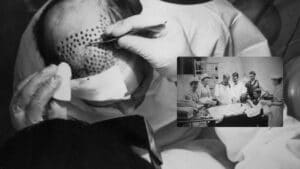After 6 months of undergoing a FUE hair transplant in Los Angeles, you can expect to see noticeable results. While the final outcome will vary from person to person, it’s important to keep realistic expectations and remember that everyone heals differently.
In the first few weeks after the procedure, your scalp may be tender and there may be some discomfort. However, this should subside quickly and not hinder your daily activities. It’s important to follow your doctor’s recommendations for post-operative care, which may include taking medications or using certain products to promote hair growth.
Within 6-7 more months after your hair is, you should begin to see significant regrowth at the transplant site. This is when you will notice the biggest change in your appearance as new hair continues to grow. On average, hair grows about ¼ inch per month, so by this point, you may have around an inch of new growth.
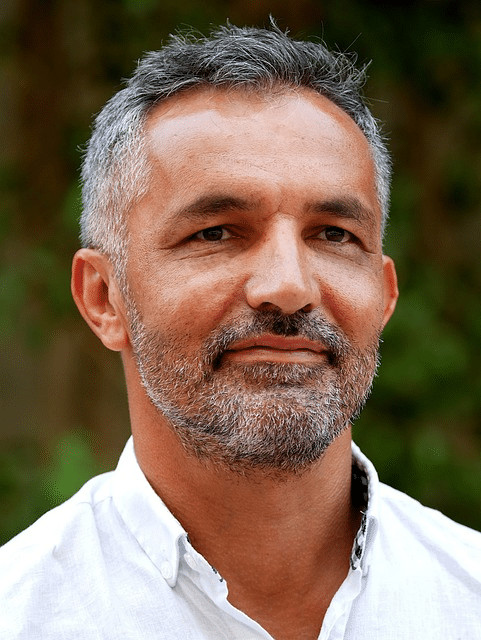
FUE Hair Transplant 6 Months After Results
At the 6-month mark, you may still have some remaining transplanted back hair strands fall out, but this is completely normal and part of the regrowth process. It can be discouraging to see some hair loss again, but don’t worry – it’s just making room for new, stronger hair to grow in its place.
It’s important to continue following your doctor’s recommendations for post-operative care during this time. This may include using minoxidil or other hair growth products, taking vitamins to promote healthy hair growth, and maintaining a balanced diet. Additionally, reducing stress levels can also contribute to better hair growth.
As the six months after hair transplant go by, you will continue to see more new hair growth at the transplant site. By 18 months after the procedure, most people will see full regrowth and a significant improvement in their hair thickness and appearance.
What is your hair growth cycle?

Understanding your hair growth cycle is important when considering a FUE hair transplant 6 months after. The three main stages of the hair growth cycle are anagen, catagen, and telogen. Anagen is the active but slow hair growth phase where new hair cells form and push out old hairs from the follicle. This lasts about 2-7 years and determines how long each hair can grow.
Catagen is the transitional phase where hair growth stops and the follicle begins to shrink. This lasts about 10 days and only affects about 3% of hairs at any given time. Telogen is the resting phase where old hairs are shed and new ones begin to grow in their place. This lasts about 3 months and affects up to 10% of hairs at any given time.
During a FUE hair transplant, the surgeon will harvest healthy hair follicles from the donor area and implant them into the recipient area. These same newly transplanted hair follicles will then go through their natural growth cycle just like any other hair on your head. While it’s important to follow proper post-operative care for optimal results, the success of a FUE hair transplant ultimately depends on the individual’s natural hair growth cycle.
It’s also important to note that not all hairs are in the same phase at the same time, which is why multiple sessions may be needed for a full head of hair. Additionally, certain factors such as age, genetics, and overall health can affect an individual’s hair growth cycle and may need to be taken into consideration before undergoing a hair transplant.
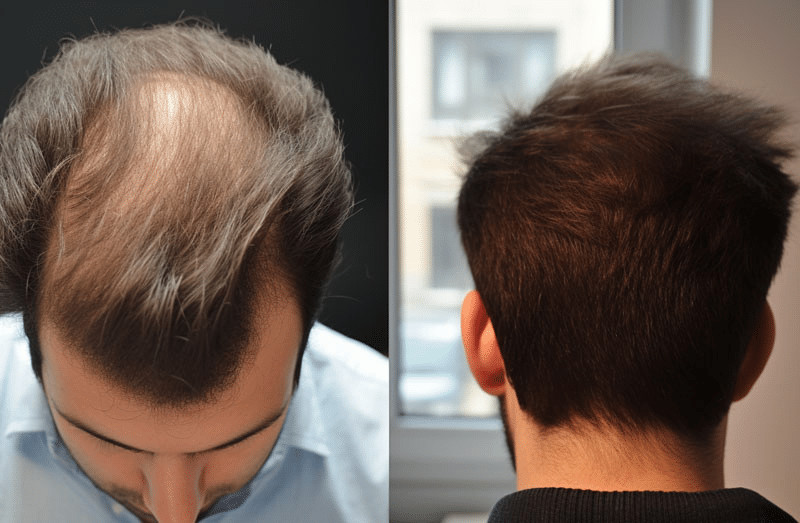
What happens during the first 6 months?
During the first 6 months after a FUE hair transplant, you may experience some shedding of transplanted hairs. This is completely normal and a natural part of the hair growth process. The new follicles will go through their normal growth cycle, with some hairs falling out to make room for new ones to grow.
At around 3-4 months, you may start to notice the initial regrowth of hair in the transplant site. This is when you will see the first signs of a fuller head of hair. As time goes on, the new hairs will continue to grow and thicken, giving you a more natural-looking appearance. It’s important to continue following your doctor’s recommendations for post-operative care to ensure the best possible outcome.
Around 6 months after hair,, you can expect to see significant regrowth and a noticeable change in your appearance. While it may take up to 18 months for full results to be seen, the first 6 months mark an important milestone in the hair transplant journey.
With proper aftercare and patience, you can achieve natural-looking, long-lasting results from a FUE hair transplant in Los Angeles. So, if you’re considering a hair replacement procedure, keep these expectations in mind and consult with a trusted surgeon to see if it’s the right option for you.
Female hair transplant after 6 months

While male hair loss is a common concern, it’s important to note that women can also experience hair thinning and balding. For women considering a FUE hair transplant in Los Angeles, the recovery process and results may differ slightly from men.
After 6 months of undergoing a female hair transplant, there may be some differences in the hair growth pattern compared to men. Due to hormonal differences and the natural structure of female hair, women may see slower but more gradual results. This is because female hair tends to have a finer texture and grows at a slightly slower rate than male hair.
Additionally, women may also experience some temporary shedding after the procedure, similar to what men go through. However, this should not be a cause for concern as it is a normal part of the hair growth process with transplanted hairs falling out to make room for new ones.
The first 6 months after a female hair transplant may involve some patience and trust in the natural hair growth cycle. It’s important to follow proper post-operative care and communicate any concerns or questions with your surgeon. With time and patience, you can expect to see significant changes in your hair thickness and appearance, just like men do.
Promoting hair growth after a hair transplant
After a hair transplant procedure, it’s important to continue promoting healthy hair growth to maintain the results achieved. This can be done through proper aftercare and lifestyle choices. Firstly, following your doctor’s recommendations for post-operative care is crucial. This may include using minoxidil or other hair growth products as directed, taking vitamins to promote healthy hair growth, and avoiding harsh chemicals or styling tools.
Additionally, maintaining a healthy diet and lifestyle can also contribute to better hair growth. Eating a balanced diet rich in protein, vitamins, and minerals can provide the necessary nutrients for your hair follicles to grow strong and healthy. Regular exercise can also improve blood circulation, which is important for delivering nutrients to the scalp and promoting hair growth.
Reducing stress levels is also important for promoting hair growth. High levels of stress can affect hormone levels and disrupt the natural hair growth cycle, resulting in hair loss or thinning. Practice stress-reducing techniques such as meditation or yoga to maintain a healthy balance.
Hair Transplant 6 Months vs 1 Year: Managing Your Expectations

It’s important to understand that the results of a hair transplant may take time and patience, with noticeable changes occurring gradually over several months. While some individuals may see significant improvement after just 6 months, others may have to wait up to a year or even longer for full results.
At 6 months, you can expect to see initial regrowth and a noticeable change in appearance, but the hair transplant journey is far from over. It may take up to 18 months for all transplanted hairs to fully grow and blend in with the rest of your natural hair.
As time goes on, you may notice continued improvement in hair thickness and coverage. However, it’s important to manage your expectations and understand that the final results of a hair transplant are not just about achieving a full head of hair, but also creating natural-looking results that blend in seamlessly with your existing hair.
Things to Keep in Mind After Hair Transplant Surgery
It’s also important to remember that everyone’s individual hair growth and response to the procedure may vary. Some individuals may require more than one session of FUE hair transplantation to achieve their desired results, while others may see significant improvement from just one session.
it’s essential to communicate openly with your surgeon and follow their post-operative care instructions for the best possible outcome. It’s also important to have realistic expectations and understand that hair growth is a gradual process that may take time.
With patience and proper aftercare, you can achieve natural-looking, long-lasting results from a FUE hair transplant. So, if you’re considering a hair replacement procedure, consult with a trusted surgeon to discuss your individual expectations and potential results.
Are There Side Effects 6 Months After a Hair Transplant?
While a hair transplant is generally a safe and effective procedure, it’s important to be aware of potential side effects that may occur during the recovery process. Most side effects are temporary and should subside within a few weeks or months after the surgery.
Some common side effects that may occur 6 months after a hair transplant include swelling, itching, and numbness or sensitivity in the scalp. These are all normal reactions to the procedure and should improve with time.
Some individuals may also experience shock loss, which is a temporary shedding of transplanted hairs as they enter the resting phase before regrowing. This can occur at any time during the first few months after a hair transplant, including 6 months after the procedure. However, it’s important to note that shock loss is a normal part of the hair growth process after hair transplants and should not be a cause for concern.
In rare cases, there may be more severe side effects such as infection or scarring. This can typically be prevented with proper aftercare and following your surgeon’s instructions.
If you experience any concerning symptoms or side effects, it’s important to communicate with your surgeon and seek medical attention if necessary. As long as you follow proper aftercare and regularly communicate with your surgeon, any potential side effects should be manageable and temporary.

How Quickly Does New Hair Grow After Hair Grafts Are Transplanted?
Hair growth is a natural process that varies for each individual. The average rate of hair growth is about half an inch per month, but this can vary depending on factors such as genetics, age, and overall health.
Hair grows in three phases: anagen (growth), catagen (transition), and telogen (resting). The anagen phase is the active growing stage, which can last anywhere from 2-6 years. The catagen phase is a transitional stage where hair stops growing and detaches from the blood supply, lasting for about 2-3 weeks. The telogen phase is the resting stage of noticeable hair growth where old hairs fall out and new ones begin to grow in their place.
On average, about 90% of our hair is in the anagen phase noticeable growth at any given time. This means that most of our hair is actively growing and will continue to grow for several years before transitioning into the catagen and telogen phases.
Everyone’s New Hair Growth Phase is Different
While there are some factors that can affect hair growth, such as stress or certain medical conditions, it’s important to understand that everyone’s hair growth rate may vary. However, maintaining a healthy lifestyle and following proper aftercare instructions can help promote optimal hair growth.
In the case of a hair transplant, the transplanted hairs will initially enter the anagen phase and start growing at a normal rate within the first few months. By 6 months, you can expect to see initial regrowth and continued improvement in hair thickness and coverage over the following months.

How to Speed Up Hair Growth After A Hair Transplant?
After a hair transplant, it’s natural to be eager for your new hair to grow in as quickly as possible. While there is no magic solution to make your hair grow faster, there are some things you can do to promote healthy and speedy hair growth.
Also, keep in mind that hair growth is a gradual process and it may take up to 18 months for all transplanted hairs to fully grow and blend in with your natural hair. So, for most hair transplant patients, the key to success is patience.
For a Healthy Head, Follow Your Doctor’s Instructions
One of the best ways to speed up hair growth after a hair transplant is by following proper aftercare instructions from your surgeon. This includes keeping the scalp clean and avoiding any activities that may disrupt the healing process, such as strenuous exercise or wearing hats or helmets.
Eat a Balanced Diet, Especially in the Early Stages of Recovery
Eating a balanced and nutritious diet can also promote hair growth. Foods high in protein, iron, and vitamins A, C, and E are especially beneficial for healthy hair growth. Additionally, staying hydrated by drinking plenty of water is important for maintaining healthy scalp cells and promoting hair growth.
Scalp Massage May Yield Positive Final Results and Prevent Uneven Growth Rates
Some people also find that utilizing scalp massage techniques can help stimulate blood flow and promote hair growth. However, it’s important to consult with your surgeon before attempting any scalp massages to ensure it is safe for your specific case.
Avoid Stress, Both Physical & Mental, to Transplanted Areas
Avoiding stress and getting enough rest and sleep can also contribute to healthy hair growth. Stress can cause hormonal imbalances that may disrupt the hair growth cycle, while getting enough sleep allows the body to repair and regenerate cells, promoting healthy hair growth.
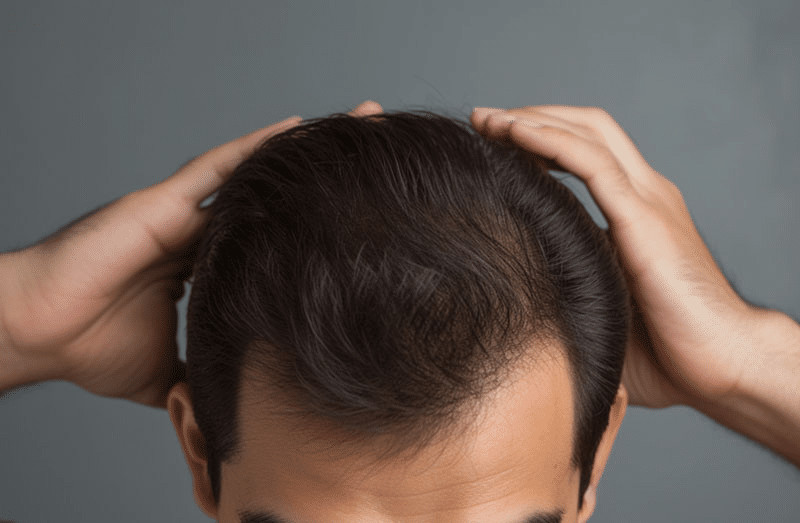
Realistic Expectation Timeline After a Hair Transplant
After a hair transplant, it’s important to have realistic expectations about the timeline of results. While everyone’s hair transplant recovery and process may vary, here is a general guideline for what you can expect in terms of hair growth and overall appearance after a hair transplant.
Immediately after the procedure, you will experience some mild swelling and redness around the transplanted area. This is normal and should subside within a few days. Within the first few weeks, the transplanted hairs will start to shed as they enter the resting phase before regrowing. This may give the appearance of no hair growth, but this is a normal part of the process and does not mean that your hair transplant surgery was unsuccessful.
Typical Transplant Area Timeline
Around 3-4 months after the procedure, you should start to see initial signs of hair growth as the transplanted hairs enter the anagen (growth) phase.
By 6 months, you can expect to see more significant growth and improvement in hair density, and coverage. However, it’s important to note that everyone’s hair transplant results may vary and some individuals may require additional sessions for optimal results.
By 12-18 months post-procedure, you should see full effects of your hair transplant, with continued improvement in density and coverage. It’s important to continue following proper aftercare instructions during this time to ensure optimal results.
While a hair transplant can restore a fuller head of hair, it may not completely replicate your natural hairline from years ago. Your surgeon will work with you to create a natural and age-appropriate hairline that suits your facial features.
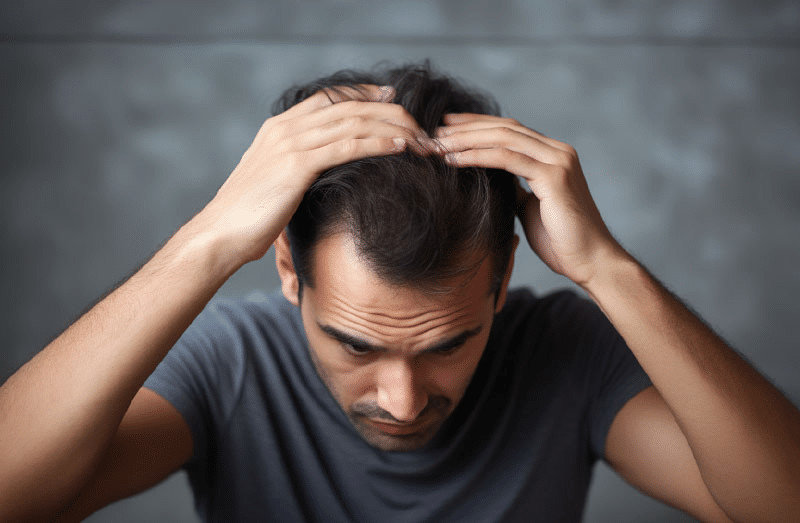
Follow Your Doctor’s Recommendations to Avoid Unexpected Challenges and a Less Than Desirable Final Result
Your doctor’s recommendations for aftercare and maintenance are crucial to ensure the success of your hair transplant. It’s important to follow these instructions carefully to promote healthy hair growth and overall recovery post hair transplant.
This may include taking any prescribed medications or supplements, avoiding certain activities or products that may disrupt the healing process, and keeping the scalp clean and well-nourished. Your doctor may also recommend regular check-ups to monitor your progress and make any necessary adjustments to your aftercare plan.
In addition, it’s important to attend follow-up appointments with your surgeon as scheduled. These visits allow your doctor to assess the growth and density of your transplanted hairs and make any recommendations for further treatment if needed. It’s also important to keep an open line of communication with your surgeon.
It’s crucial to keep the transplanted area clean and free from any potential irritants or infections. This includes gently washing the area as instructed and avoiding harsh chemicals or styling products on the scalp.
It’s important to protect your new hair from any potential damage. This may include avoiding direct sunlight, wearing a hat when necessary, and being careful during activities that may cause trauma to the scalp.
Contact Best Hair Transplant
If you’re considering a hair transplant or have recently undergone the procedure, it’s important to choose a reputable and experienced surgeon for the best results. Best Hair Transplant offers top-quality hair restoration services with a team of highly skilled and experienced surgeons.
Our surgeons utilize the latest techniques, including Follicular Unit Extraction (FUE), to provide natural-looking and long-lasting results. We understand that each patient’s needs are unique, which is why we offer personalized treatment plans to address specific concerns and goals.
At Best Hair Transplant, our focus is on providing a comfortable and positive experience for our hair transplant patients from start to finish. Our team provides comprehensive aftercare instructions and support to ensure optimal results and satisfaction with your hair transplant.
Ready to take the first step towards a fuller head of hair? Contact Best Hair Transplant today. Our team is dedicated to helping you achieve your desired results and boosting your confidence. Schedule a consultation with us to learn more about our services and see how we can help you on your journey towards healthy and natural-looking hair.
FAQs
Will I need to take hair vitamins after a hair transplant?
While hair vitamins can promote healthy hair growth, they are not necessary for the success of your hair transplant. Your surgeon may recommend specific supplements to aid in hair transplant recovery process and promote healthy hair growth, but it’s important to consult with them before starting any new vitamins or supplements.
How long does it take to recover hair transplantation?
Recovery times from hair transplantation can vary for each individual, but generally it takes around 7-10 days for the transplanted area to heal and any scabs or redness to subside. However, it may take up to several weeks for the scalp to fully heal and for normal hair growth activities to resume. It’s important to follow your surgeon’s aftercare instructions during this time to ensure a smooth recovery.
What to expect immediately after a hair transplant?
Immediately after a hair transplant, you can expect some mild swelling and redness around the transplanted area. This is normal and should subside within a few days. Your scalp may also be tender or sore, but this can be managed with pain medication prescribed by your surgeon.

